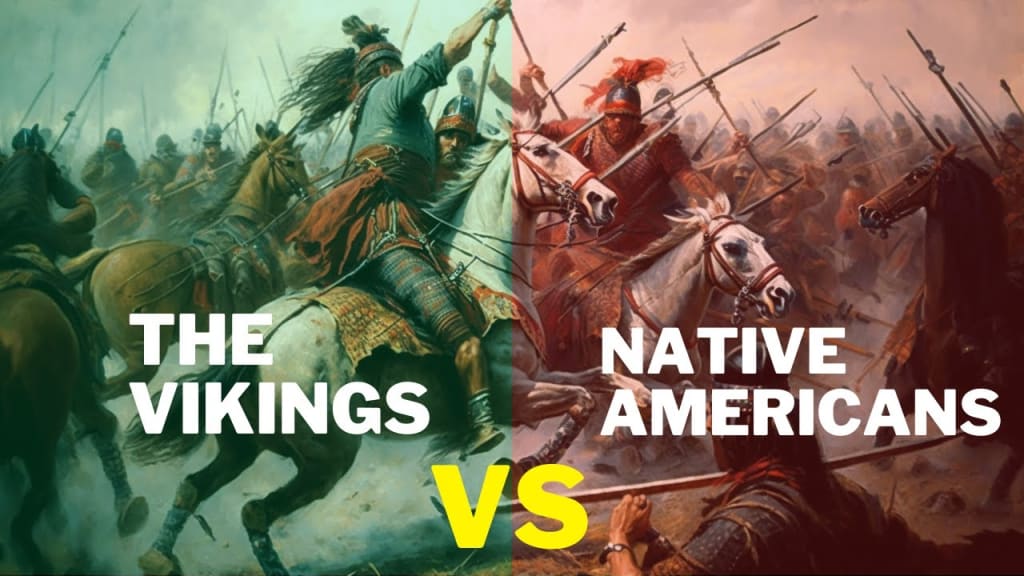Vikings in North America: A Flash in the Pan, a Mystery for the Ages
Unveiling the Brief Saga of Norse Explorers and the Enduring Enigma of their Disappearance

Almost a millennium before Columbus, Norse explorers, known as Vikings, ventured across the vast Atlantic, leaving whispers of their presence in the enigmatic sagas and faint etchings in the archaeological record. This is the captivating story of the Vikings in North America, a tale shrouded in mystery, marked by fleeting encounters and unresolved questions.
For nearly 12,000 years, the Americas remained isolated from the Eurasian world. Civilizations flourished on both continents, oblivious to each other's existence. Then, around 1000 AD, the Vikings shattered this isolation. Driven by a thirst for exploration, perhaps spurred by tales of a land to the west, they ventured forth from their settlements in Greenland and Iceland.
Their arrival wasn't a peaceful one. The sagas, epic Icelandic narratives, recount clashes with the "Skraelings," a term believed to refer to the ancestors of the Inuit. One saga describes a violent encounter led by Thorvald Eriksson, where a Viking lost his life to an arrow.

Despite the tension, there were instances of exchange. The Vikings, skilled traders, likely bartered with the Skraelings, exchanging European goods like red cloth for furs. However, tensions escalated, culminating in a legendary battle, possibly sparked by a frightened bull from the Viking settlement. This clash, according to the sagas, may have been the final straw, prompting the Vikings to abandon their dreams of a new home in North America.
The archaeological evidence for this Viking sojourn is scarce. L'Anse aux Meadows, a settlement in Newfoundland, stands as the sole confirmed Norse settlement in North America. The unearthed remains of sod houses, ironwork, and a possible boat repair facility paint a picture of a temporary base, not a permanent colony. A single Norse coin, unearthed in Maine, further bolsters the case for Viking presence, though its exact significance remains debated.
The sagas themselves pose another challenge. Composed centuries after the events they portray, they blur the line between historical fact and embellished fiction. They mention three locations: Helluland (land of flat stones), Markland (land of forests), and Vinland (land of wine), but their exact locations remain a puzzle. Scholars tirelessly debate whether Vinland refers to Newfoundland or somewhere further south.
The reasons for the Viking departure are equally enigmatic. Some theories point to a lack of resources or the hostility of the Skraelings. However, a compelling explanation lies in the climatic shift of the era. The Vikings arrived during the Medieval Warm Period, a time of favorable conditions. But the subsequent Little Ice Age, marked by plummeting temperatures and advancing glaciers, made travel treacherous and survival in the North Atlantic difficult. The Vikings in Greenland and Iceland themselves faced hardships, with evidence suggesting food shortages and disease. Perhaps the harsh turn in the climate sealed the fate of any aspirations for a permanent North American colony.
The Viking presence in North America was a fleeting episode, a mere blip in the grand timeline of the continent. Yet, it holds immense significance. It shatters the myth of pre-Columbian isolation and compels us to consider the possibility of earlier transatlantic crossings. The story of the Vikings in North America is a captivating blend of history, archaeology, and intrigue, leaving us with more questions than answers. Did they truly set foot in North America? Where exactly did they land? What ultimately led them to leave? These mysteries continue to fuel our fascination and inspire ongoing research, ensuring that the saga of the Vikings in North America remains an open chapter.
Key Takeaway :-
- Exploration and Unexpected Encounters: The Viking voyages demonstrate the human spirit of exploration and the potential for encountering the unknown. Their journey across the Atlantic highlights the interconnectedness of the world, even in earlier times.
- Challenges of Colonization: The story also emphasizes the difficulties of establishing a permanent colony. The Vikings faced not only the harsh climate but also potential conflicts with the native population. It highlights the importance of adaptation and cultural exchange for successful colonization.
- The Power of Climate: The Viking Experience underscores the influence of climate on human history. The favorable conditions of the Medieval Warm Period facilitated their voyage, but the subsequent Little Ice Age likely played a role in their departure. It reminds us of our dependence on the environment and the impact of climate change.
- Enduring Mysteries of History: The story of the Vikings in North America serves as a reminder that history is full of unanswered questions. The lack of definitive evidence and the ambiguity of the sagas leave room for interpretation and ongoing research. It highlights the importance of critical thinking and the ongoing quest to understand the past.
About the Creator
Enjoyed the story? Support the Creator.
Subscribe for free to receive all their stories in your feed. You could also pledge your support or give them a one-off tip, letting them know you appreciate their work.






Comments
There are no comments for this story
Be the first to respond and start the conversation.